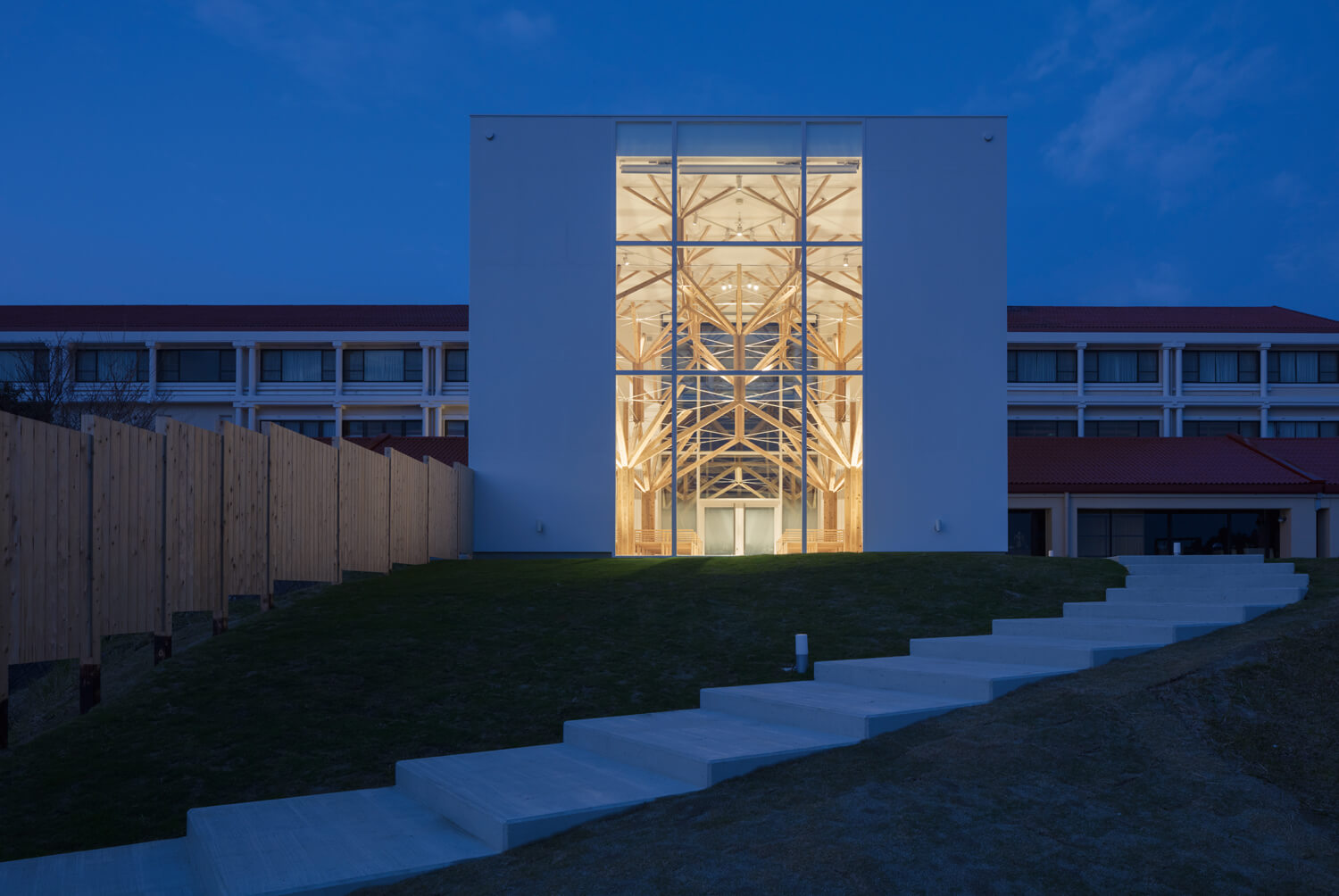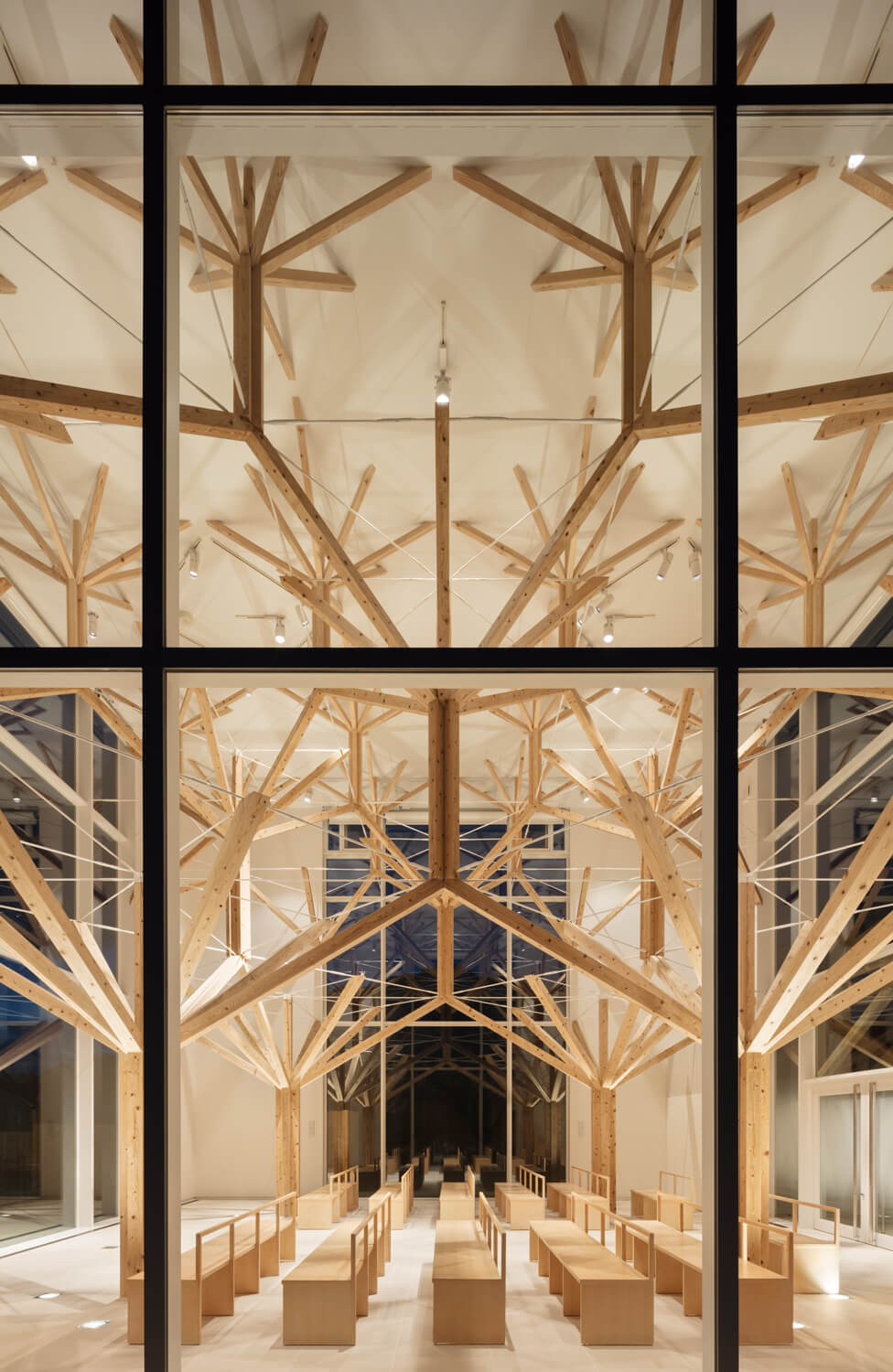A Forest and a Masterpiece of Carpentry Inside a Chapel in Nagasaki
Agri Chapel has no altar and is entirely dedicated to contemplation of the ocean and the surrounding nature.

© Yu Momoeda Architecture Office
Agri Chapel is designed to melt into the landscape that surrounds it. It was built in 2016, in the middle of a nature reserve in Nagasaki prefecture. Observed from a slight distance, its large bay windows offer a glimpse into an immaculate interior with a raw wooden structure that recalls the natural shape of trees.
Its ‘fractal’ branch structure may appear fragile, but it in fact supports more than 25 tonnes, freeing up the floor space entirely.
Woodworking without screws or nails
This ancestral woodworking technique without screws or nails, kanawa tsugi, is renowned for its resistance to the natural disasters that frequently hit Japan. Over the centuries, it has been mainly used to construct Buddhist temples such as the Horyu-ji, dating back to 607, in Nara prefecture.
The architect behind the Agri Chapel, Yu Momoeda, was drawn to this system of joinery for the way in which it could harmonise with nature. The final form of the chapel, which resembles a valut, is a nod to the soaring arches of the neighbouring Oura-Tenshudou, the oldest wooden Gothic church in Japan, built by French missionaries in 1864.
Agri Chapel (2016), an architectural project by Yu Momoeda that can be viewed on his website.

© Yu Momoeda Architecture Office

© Yu Momoeda Architecture Office

© Yu Momoeda Architecture Office
TRENDING
-
The Tattoos that Marked the Criminals of the Edo Period
Traditional tattoos were strong signifiers; murderers had head tattoos, while theft might result in an arm tattoo.

-
Paris, Tokyo: Robert Compagnon
With his co-chef and talented wife, Jessica Yang, Robert Compagnon opened one of the top new restaurants in Paris: Le Rigmarole.
 3:31
3:31 -
The Story of Sada Yacco, the Geisha who Bewitched Europe
Described by Dazed magazine as the first beauty influencer, she has been restored to her former glory since 2019.

-
Ito Jakuchu's Naturalist Paintings
From 15 September until 14 October 2018, the Petit Palais showcased the artist's iconic ‘Images of the Colourful Realm of Living Beings’.

-
Chiharu Shiota, Red Threads of the Soul
Last year, more than 660,000 people visited the retrospective 'Chiharu Shiota: The Soul Trembles' exhibit at the Mori Art Museum.





